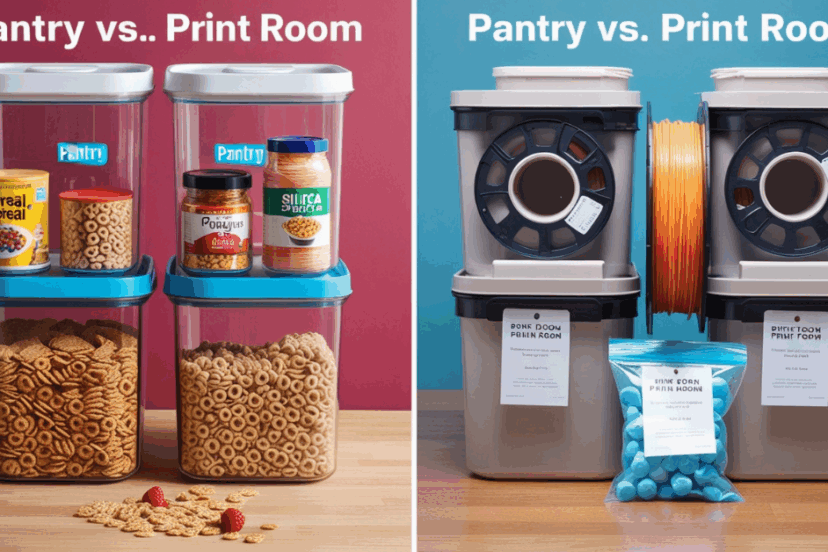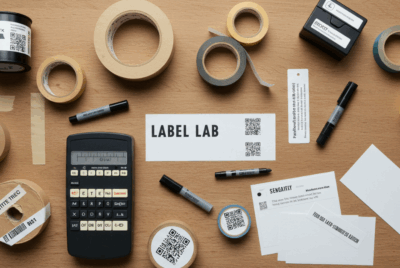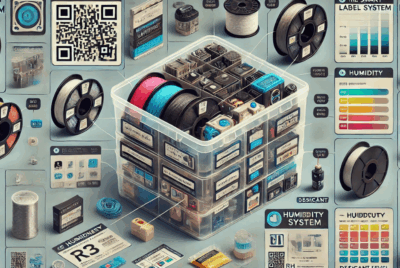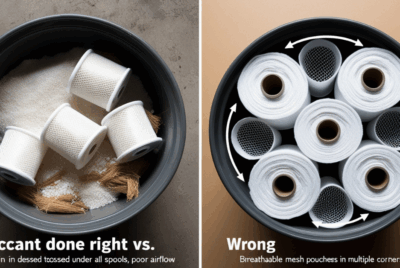Are food-grade containers safe and effective for filament storage?
1. A Storage Hack Hiding in Your Pantry
You’ve seen the advice. Maybe even thought about it.
“Just use a cereal container or pet food bin. Works great!”
But are food-grade containers really a good idea for 3D filament storage?
Let’s explore if these pantry solutions can actually keep your filament dry and print-ready.
2. What Are Food-Grade Containers, Exactly?
Food-grade containers are designed to:
- Store dry or perishable foods
- Resist odors, staining, and bacteria
- Be made from non-toxic, BPA-free plastic
- Sometimes include airtight seals or latching lids
You’ll find them everywhere—from cereal keepers to restaurant-grade tubs.
3. Why Makers Love Using Them for Filament
- Affordable and widely available
- Often airtight or semi-airtight
- Made of sturdy, transparent plastic
- Come in sizes that fit 1–5 spools
- Easy to stack or label
- Already used to storing dry, moisture-sensitive items
It’s basically food for your printer, right?
4. Pros of Using Food-Grade Containers for Filament Storage
✅ Budget-friendly
✅ Often airtight by design
✅ Available in various sizes
✅ Stackable and modular
✅ Easy to drill feed ports for dry-box setups
✅ Look neat and organized on shelves
For the price and accessibility, they offer surprisingly strong protection.
5. Common Types of Food Storage Containers Used
| Type | Filament Fit | Notes |
|---|---|---|
| Cereal bins | 1 spool | Great for dry-box mods |
| Pantry tubs (e.g., Oxo) | 1–2 spools | Stylish but small |
| Pet food bins | 5–8 spools | Durable, some have wheels |
| Flour/sugar canisters | 1–2 spools | Good short-term storage |
| Restaurant food boxes (Cambro) | 3–6 spools | Pro-grade, very sturdy |
6. Are Food-Safe Plastics Airtight Enough?
Many food-grade containers include:
- Silicone gasket seals
- Locking or clamping lids
- Moisture-resistant design
While not all are created equal, pet food and cereal containers are especially airtight due to their dry storage purpose.
Test your container by sealing it with a humidity card inside and monitoring for changes.
7. What to Watch Out for When Repurposing
❌ Loose lids with no gasket
❌ Small internal volume (can’t fit spools)
❌ Warped lids from heat or age
❌ Transparent containers exposed to sunlight
❌ Internal ridges that make spools wobble or catch
Not all food bins are print-worthy.
8. Best Practices for Converting Food Bins to Filament Storage
Here’s how to make them 3D printing-safe:
- ✅ Add silica gel packs
- ✅ Include a humidity card or sensor
- ✅ Store in cool, dark spaces
- ✅ Use foam or dividers if needed
- ✅ Drill a filament feed port for dry-box setups
- ✅ Label containers with filament type and dry date
Boom—you’ve got a filament fortress on a pantry budget.
9. Can They Handle Long-Term Storage?
Yes, if:
- The seal is tight
- You use enough desiccant
- They are stored away from heat and UV
- You don’t open them too often
For long-term storage, pair food bins with vacuum-sealed backup bags or larger airtight bins for best results.
10. Using Desiccants Inside Food Containers
Desiccant is a must, even in airtight bins.
- Use 50–100g silica gel per 2–3 spools
- Place in a corner, cup, or mesh pouch
- Use color-changing silica to track moisture
- Recharge in oven every 2–4 weeks
Don’t let your “airtight” bin turn into a filament sauna!
11. Are They Better Than Dry Boxes or Vacuum Bags?
| Feature | Food Container | Dry Box | Vacuum Bag |
|---|---|---|---|
| Cost | ✅ Low | ❌ Higher | ✅ Low |
| Airtightness | ⚠️ Varies | ✅ High | ✅ Very High |
| Long-term use | ⚠️ With care | ✅ Yes | ✅ Yes |
| Print from inside? | ✅ Yes (with mods) | ✅ Yes | ❌ No |
| Reusability | ✅ Yes | ✅ Yes | ⚠️ Limited |
Best use case: Active filament storage with short-term access.
12. Ideal Filament Types to Store in Food-Grade Containers
Food-grade bins work great for:
- ✅ PLA
- ✅ PETG
- ✅ ABS
- ✅ TPU
More sensitive filaments (like Nylon or PVA) should go in fully vacuum-sealed bags or a dedicated dry box.
13. Space-Saving Tips with Pantry-Style Bins
- Stand bins upright on shelves
- Use color-coded lids for material sorting
- Attach humidity cards to the lid interior
- Stack spools with foam liners or paper dividers
- Store infrequently used filament in the back or bottom bins
Keep it clean, dry, and easy to access = more printing, less searching.
14. Real Maker Setups Using Food Bins
- A 5-spool pet food bin with feed ports and hygrometer
- Cereal containers with one spool, PTFE tubing, and silica
- Stackable Oxo pantry bins for quick material swaps
- Clear restaurant tubs with drawer dividers and labels
Check out Reddit’s r/3Dprinting or Maker forums for inspo—it’s a legit trend!
15. Final Thoughts: Budget-Friendly, If You Do It Right
Food-grade containers offer a clever, cost-effective way to store filament safely—especially for everyday users or those tight on space.
✅ Airtight (if chosen well)
✅ Modifiable
✅ Widely available
✅ Proven by makers
Add some desiccant, a little humidity tracking, and you’re good to go.
❓FAQs
- Can I use a cereal container as a dry box?
Yes! Just drill a filament feed hole and add desiccant. Perfect for daily use. - Are food bins safe for long-term filament storage?
Yes, but only if they’re airtight and include moisture control tools. - Is there any difference between food-safe and filament-safe plastic?
Functionally no—just be sure it’s BPA-free and airtight for your needs. - Do I need to modify food bins for filament?
Not always, but adding gaskets, silica, and tracking makes them way more effective. - What’s better: food bins or dry boxes?
Dry boxes offer active drying; food bins offer budget static storage—both are useful.




